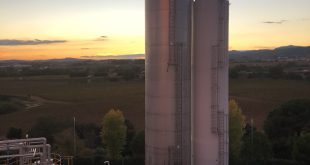Busy container seaports rely upon the ‘24/7’ operation of specialist container-handling vehicles called Straddle Carriers for loading, unloading and stacking containers. Often located at ports, being beside the sea can mean that they have to work in an aggressive and corrosive environment, requiring frequent maintenance.
Because traditional, interval-based maintenance schedules are not optimally efficient, condition-based intervention systems which minimise the risk of breakdown, are popular. European port operators therefore frequently rely upon Contrinex’s rugged, analogue-output inductive sensors to monitor components with a high risk of premature failure, maximising vehicle utilisation and reducing maintenance costs.
Application
A fleet of straddle carriers services a busy German container port, operating round the clock in a highly aggressive environment. Frequent maintenance is necessary, but traditional, interval-based maintenance schedules are not always optimal. Condition-based intervention minimises the risk of breakdowns while imposing fewer constraints on day-to-day operation; it also incurs cost only when necessary.
As a carrier moves over a container, a central spreader beam lowers and locks onto the four corner fittings of the container. Plain plastic bearings on the carrier legs guide the container as it is raised; there is significant contamination from dirt and other debris. Bearings wear rapidly in the all-weather operating conditions.
A condition-monitoring system must measure bearing thickness, repeatably and accurately, in real-time and with µm resolution. Sensors must operate reliably in the harsh environment with a minimum rating of IP67. Sensor length must not exceed 70mm and a minimum sensing range of 30mm is mandatory.
Solution
Contrinex’s Analogue Inductive sensors, which feature ‘Extra Distance’ technology are ideal for this demanding application. These M30-diameter metal-bodied devices are IP67-rated and provide an analogue voltage (0 to 10 volt) or current (4 to 20mA) output. The sensors are less than 50mm long with a 40mm sensing range, comfortably exceeding the specified requirement.
A mild steel mounting plate, fixed immediately behind the plastic bearing, locates each sensor with its sensing face in contact with the rear surface of the bearing. As a container passes over the front face of the bearing, the sensor measures the distance to the metal container wall, and thus the bearing thickness. Data is collected in real-time with exceptional accuracy and resolution in the micron range.
Data passes to on-board computers mounted on each carrier; connection is via a flexible cable with an easily detachable M12 connector. At intervals, carriers transmit data wirelessly to a central processor for detailed analysis.
The output gives a clear indication of the condition and wear rate of each bearing, identifying any carrier requiring maintenance. Consequently, the port operator has the means to develop a genuine commercial advantage by eliminating compromise from day-to-day operating processes.
 Instrumentation Monthly Test | Measurement | Control
Instrumentation Monthly Test | Measurement | Control




